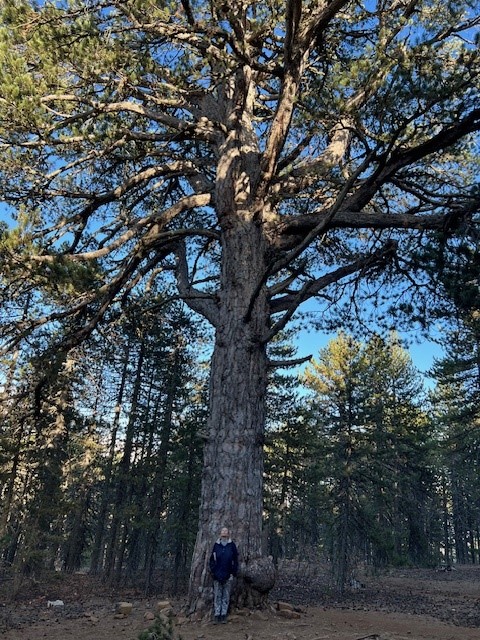Teaching and learning contemporary biology
Computational Biomedicine
With the aim of promoting scientific literacy and mathematical literacy among 9th grade students in the excellence tracks, we developed novel learning and teaching materials entitled Computational Biomedicine. These materials enable learners to practice mathematical modeling based on authentic data obtained from biomedical studies. In the course of the implementation of these novel materials, we attempt to examine the possible development of interdisciplinary cognition among the junior-high school science teachers who participate in the professional development program that accompanied the Computational Biomedicine program and teach the program in class.

An example of an interdisciplinary problem in Computational biomedicine: Students are requested to solve the discrepancy between the graph they hypothesized for bacterial growth (on the left, a proposed mathematical model) and the graph of the real data of bacterial growth in the lab (on the right, results in reality).
Click here to visit the program's website and access our learning materials.
Promoting Climate and Marine Literacy in the Biology Classroom
Oceanic ecosystems are currently under extreme stress as a result of anthropogenic activity. At the same time, the ocean plays important roles in absorbing excess atmospheric carbon dioxide and heat, ultimately regulating the global climate. While climate change is taught as part of the Israeli education program, the marine environment and its substantial impact on the global climate are not appropriately discussed in the classroom. This creates a significant knowledge gap for students, who are probably more familiar with only ‘half of the picture’, namely, terrestrial ecosystems, and their interplay with the climate. We promote marine and climate literacy within the high-school community, by and introducing new knowledge based on cutting-edge scientific research, to provide a fundamental understanding of the causes, mechanisms, and impacts of climate change.

Clavelina picta, a species of marine tunicate.
Climate Change
While climate literacy is often linked to scientific literacy, it also involves considering social, economic, and ethical factors. For young people, climate change can elicit emotional responses, such as anxiety and pessimism. Thus, understanding climate change requires in addition to knowledge also important skills, such as systems thinking, critical thinking, and argumentation. To foster climate literacy, we developed a skills-based, learner-centered approach and implemented it in a middle-school blended course. The course is centered on the role of trees in mitigating global warming. The course structure and pedagogical approach provide teachers with a framework that is aimed to support explicit instruction of skills and incorporate inclusive and personalized learning within a blended learning environment to address diverse learners' needs. We explore the long-term impact of this approach on students' climate literacy and pro-environmental behaviors.

Giant black pine (Pinus Nigra ssp. Pallasiana), Troodos National Forest Park, the Olympus Mountain, Cyprus.
Biological Systems Thinking
We developed a theoretical model for characterizing systems thinking in biology and is using this model for examining the development of students' systems thinking skills when learning about various biological topics. Developing systems thinking skills in school may provide a useful tool to deal with the vast amount of information, and thus may help learners in developing decision making skills. Moreover, to understand any biological system, be it at the molecular, cellular or organism level, students need a conception of the system in its 'real' working mode with all its active parts.

A unified model for characterizing systems thinking skills in biology (taken from Raved & Yarden, 2014). The model is based on (1) Hmelo et al., 2000; (3) Ben-Zvi Assaraf & Orion, 2005; (12) Verhoeff et al, 2008.
Teaching and Learning Evolution
As of 2016, the topic of evolution has been a part of the biology curriculum in high schools and of the science and technology curriculum in junior high schools. Thus, a need arose to investigate whether there are difficulties in teaching and learning of this topic. The study raised theological and pedagogical difficulties in teaching and learning evolution. Following these findings, it was required to start teacher training courses on the topic of evolution. Furthermore, a need arose to suggest a way to teach evolution as a part of the genetics curriculum in order to lower opposition to evolution among students. Additionally, three online student centered activities dealing with human evolution were developed, and translated to English, since human evolution is a less known topic among teachers. We have developed diagnostic questionnaires in the PeTeL environment in order to analyze students’ alternative conceptions regarding evolution. Lately, we have analyzed students’ responses to evolution open-ended questions by machine learning (ML), using the BERT-based model. Nowadays we are incorporating these open-ended questions into the PeTeL environment using the BERT-based model to enable teachers a quick and accurate way to assess students’ responses and classify them into clusters according to their students’ knowledge and alternative conceptions in the field of evolution.

An example of an activity in PeTeL dealing with human evolution: The lactase activity in people who are lactose intolerant and tolerant. From: Merav Siani, Anat Yarden; Introducing Evolution of the Human Lactase Gene using an Online Interactive Activity. (2022)The American Biology Teacher.

